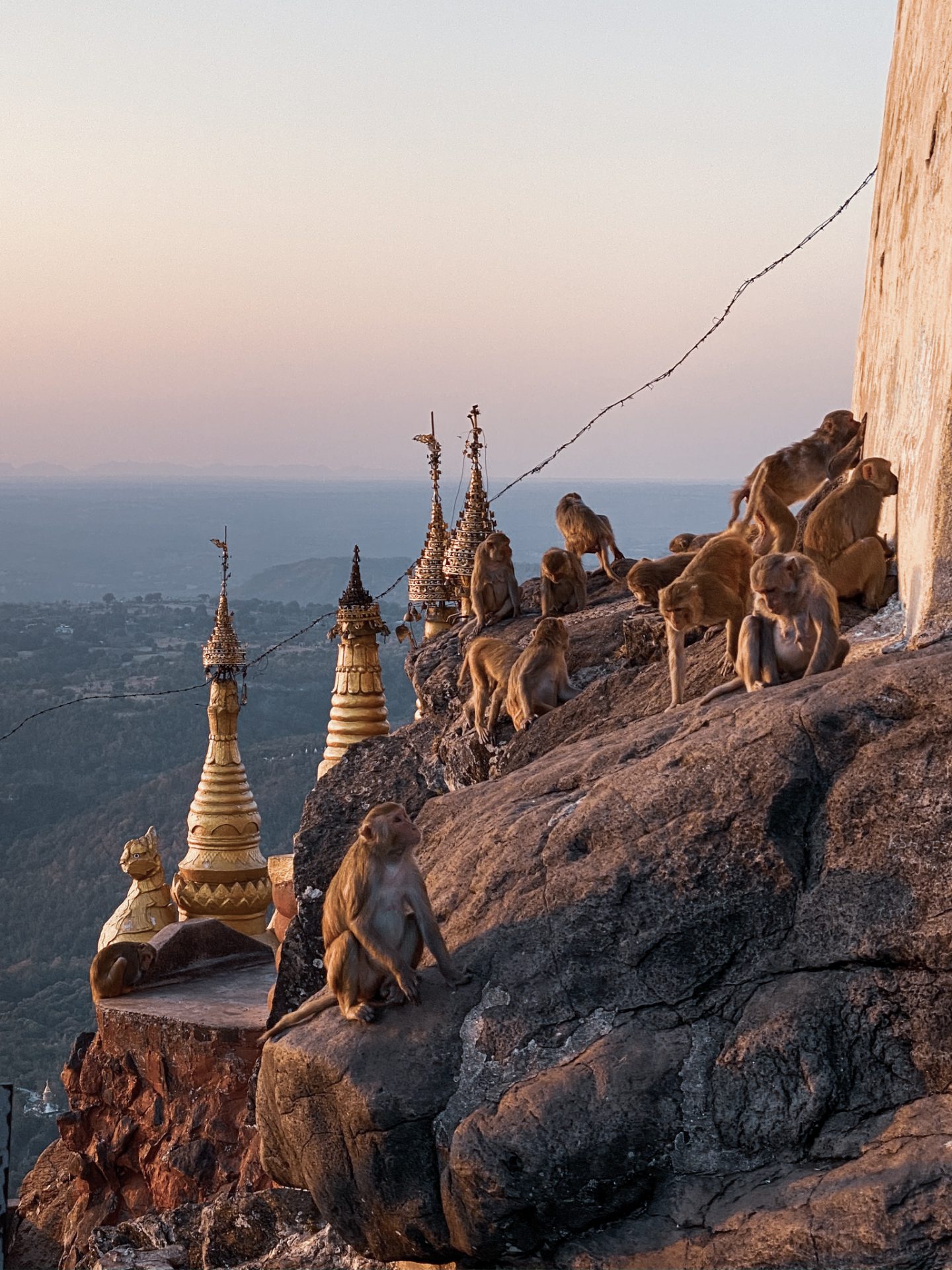Author:
Andrea Minonne @andrexplores and andrexplores.com
It’s 2020 and with globalization and low-cost airlines making it easy to travel for cheap, it’s hard to find a country with a culture that is not Westernized in some ways. I tend to stay away from mainstream destinations and even though Myanmar is quickly progressing, it was for me the perfect place in South East Asia where I could get the experience I was looking for. Mass tourism hasn’t made it to Myanmar yet and although the country is making headway in building infrastructure, services, and facilities, I managed to have an authentic experience.
I spent two weeks in Myanmar, and these are my top 5 picks:
1. Mandalay
One of the many former capitals of Myanmar, Mandalay is a great city to kick start your Burmese experience. With its countless street food stands, night markets, temples, pagodas, puppet shows, jade markets, gold leaf workshops, you will never run out of activities and things to do.
Pros:
Low prices: Mandalay prices (food, transport, and accommodation) are cheaper compared with Bagan, Inle Lake, or Yangon as tourism isn’t at mainstream levels here. Prices are ridiculously low at most markets. Don’t forget to pop by at the jade market, where you can get jade stones very cheap. Check my blog post “How to stay cheap in Mandalay” for more information.
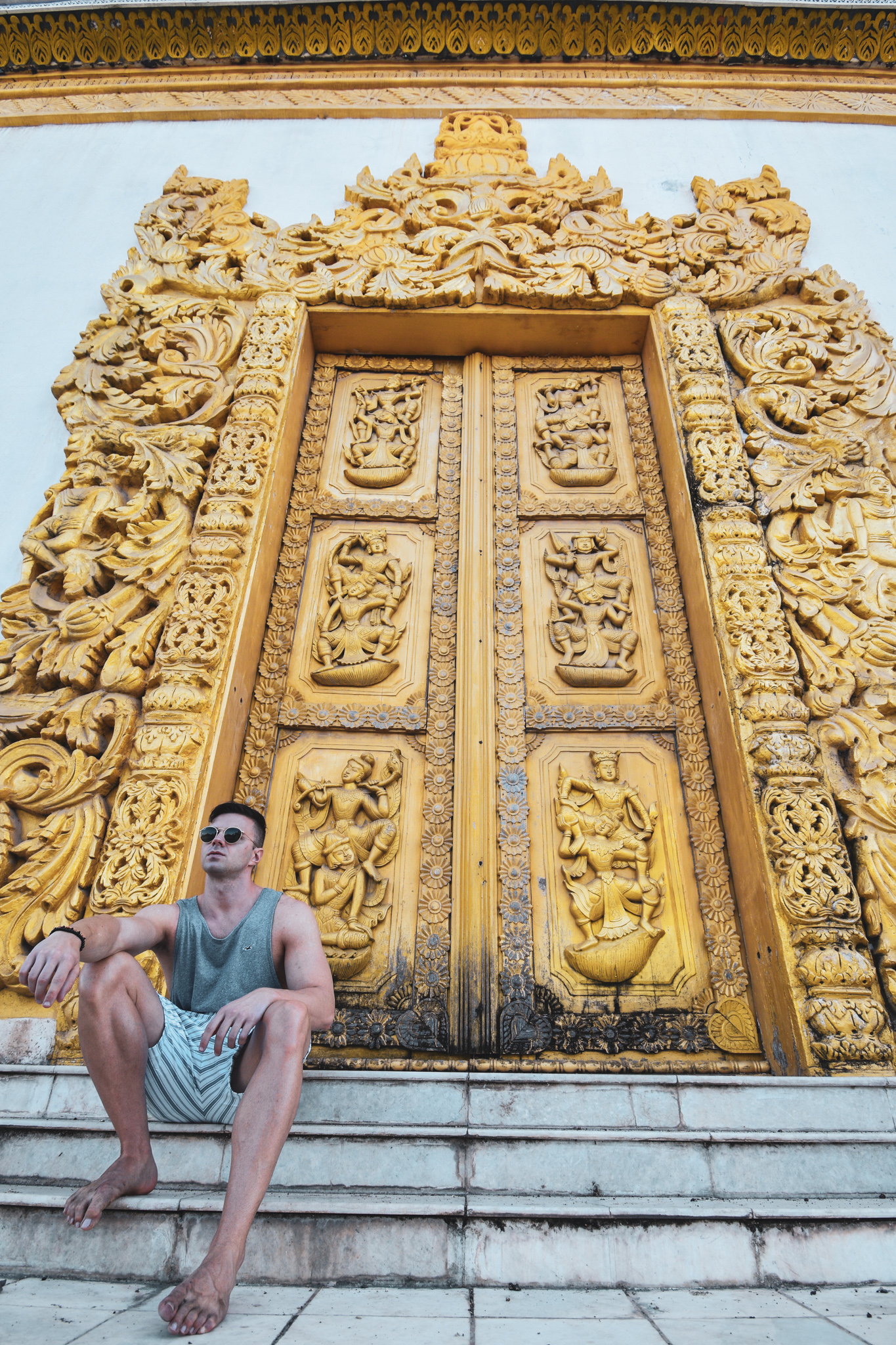

Getting around: Grab is widely used across Mandalay, which makes it easy to get around the city. You can book a car, a tuk-tuk, or a motorcycle, depending on your budget and needs. Drivers are flexible about dropping their prices if you’re short of a few kyats.
Western-free culture: Mass tourism hasn’t made it to Mandalay yet with only a few groups (mostly from China) visiting the city. Mandalay was the least touristy city I visited in Myanmar. People are very curious about foreigners here and frequently they stopped me for a picture or to talk to me.
Cons:
Power outages: If you are on a low budget, expect power outages in your hotel room. To avoid outages don’t charge many devices at the same time the air conditioning is running. Infrastructure can be poor, but it depends on how much you are willing to spend on accommodation.
Dodgy motorcycle rentals: If you are renting a motorcycle, run a full check on its full functionality (engine, wheels, battery level). It’s common practice for a rental shop to give you a motorcycle with an empty fuel tank (and it’s not expected to be brought back with a full tank). My experience wasn’t the best, with a rental shop trying to rent me a motorcycle with a dying battery and no fuel.
Don’t miss:
Mandalay Hill: This was the most touristy place in Mandalay, but the sunset here is just a magical moment you don’t want to miss. Young monks usually stop tourists to talk to them and improve their English. Do engage with them and do talk to them. You will be fascinated by their deep conversations.
2. Bagan
Landing in Bagan early morning is just like approaching an adventure movie set in a jungle where temples rise from the green and hot air balloons float in the air. With more than 2,000 temples, Bagan is a must-go for anyone who’s in Myanmar. If on one hand tourist masses flock around and break the silence of spiritual temples, on the other hand Bagan still offers a great adventurous experience with many undiscovered places – if you are looking for them and willing to ride your e-bike off the touristy tracks.
Pros:
Sunrise activities: Sunrises are what Bagan is famous for. There’s no shortage of activities to do at the crack of dawn. From early morning hot air balloon rides to personal drivers taking you to climb temples, plus terraced hotels in New Bagan serving free breakfast. Nonetheless, I escaped all of these and decided to go for a more private moment in an open field. Find out more in my Myanmar stories here.
No party life: Bagan isn’t famous for being a party town. It’s a very small village, with little nightlife. This will give you time to recharge, slow down the pace, and reconnect with the nature. If you are looking for a party place, this isn’t your best bet.
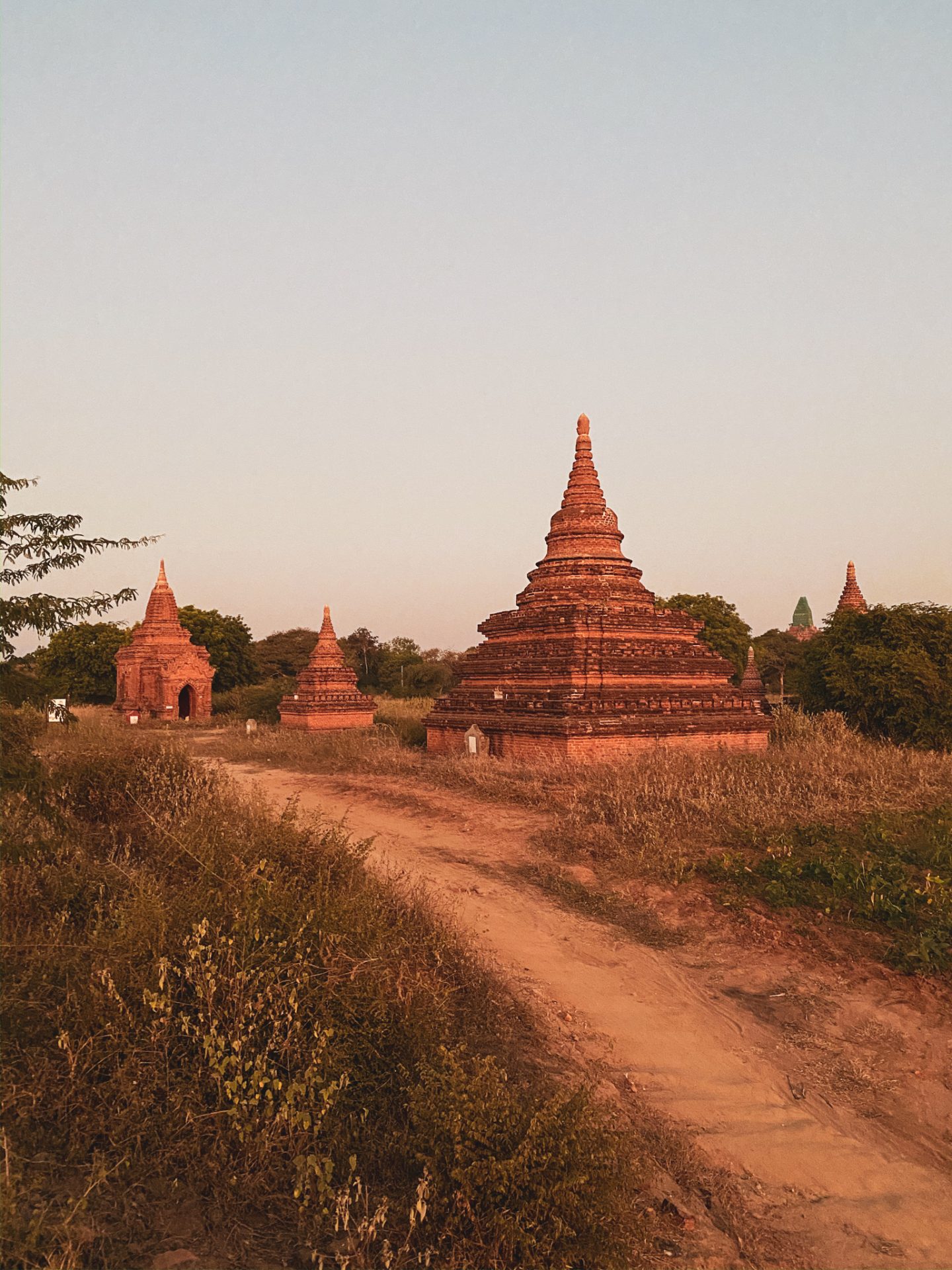

E-bikes: Foreigners aren’t allowed to drive scooters, but they have a wide offering of e-bikes, which are affordable and eco-friendly. You can either hire an e-bike in your hotel or off the street (a cheaper option).
Cons:
Crowds: Bagan’s temples are the reason why many tourists visit Myanmar. This town is small, but brings high numbers of tourists. Many early morning spots were packed with buses unloading tourists.
Street lights: If you are driving at night, drive carefully. Roads are bumpy with frequent potholes, unpaved bits or sudden sand on the road especially between Old and New Bagan.
Don’t miss:
Dhammayangyi Temple: This temple steals the show and was by far the most beautiful and interesting for me. It’s said that King Narathu was ordered to build this temple to redeem his sins, therefore a past full of secrets, assassinations, betrayals, Hindu rituals, and executions build the dark charm of this temple.
3. Inle Lake
Forget traffic. Forget cars. Forget even land. In Inle Lake everything revolves around the water. From stilt houses to floating markets, get ready to make life jackets your best friends as you will ride on a jetty boat along the lake.
Pros:
Slow life: Tasting the life of people who live on the lake was a humbling experience. Life is very simple and slow. Most people work businesses around food (fishing, farming, restaurants) or tourism (transport, accommodation).
Markets: Inle Lake is famous for both its floating and its land markets, some of which rotate in the Inle Lake region. It’s worth planning in advance or even asking locals which market is the most convenient for you to visit. Staff at your hotel receptions are your best bet.
People: Everyone is extremely friendly and although the language barrier might make it hard to communicate, people will try to accommodate your requests. This is a hard-working society, both men and women are a key part for the local economy (women are more involved in the food supply, men tent to do manual labour and transport passengers on boats), although the gender gap is still different. Check out my thoughts on “Women of Myanmar” on my Instagram post.
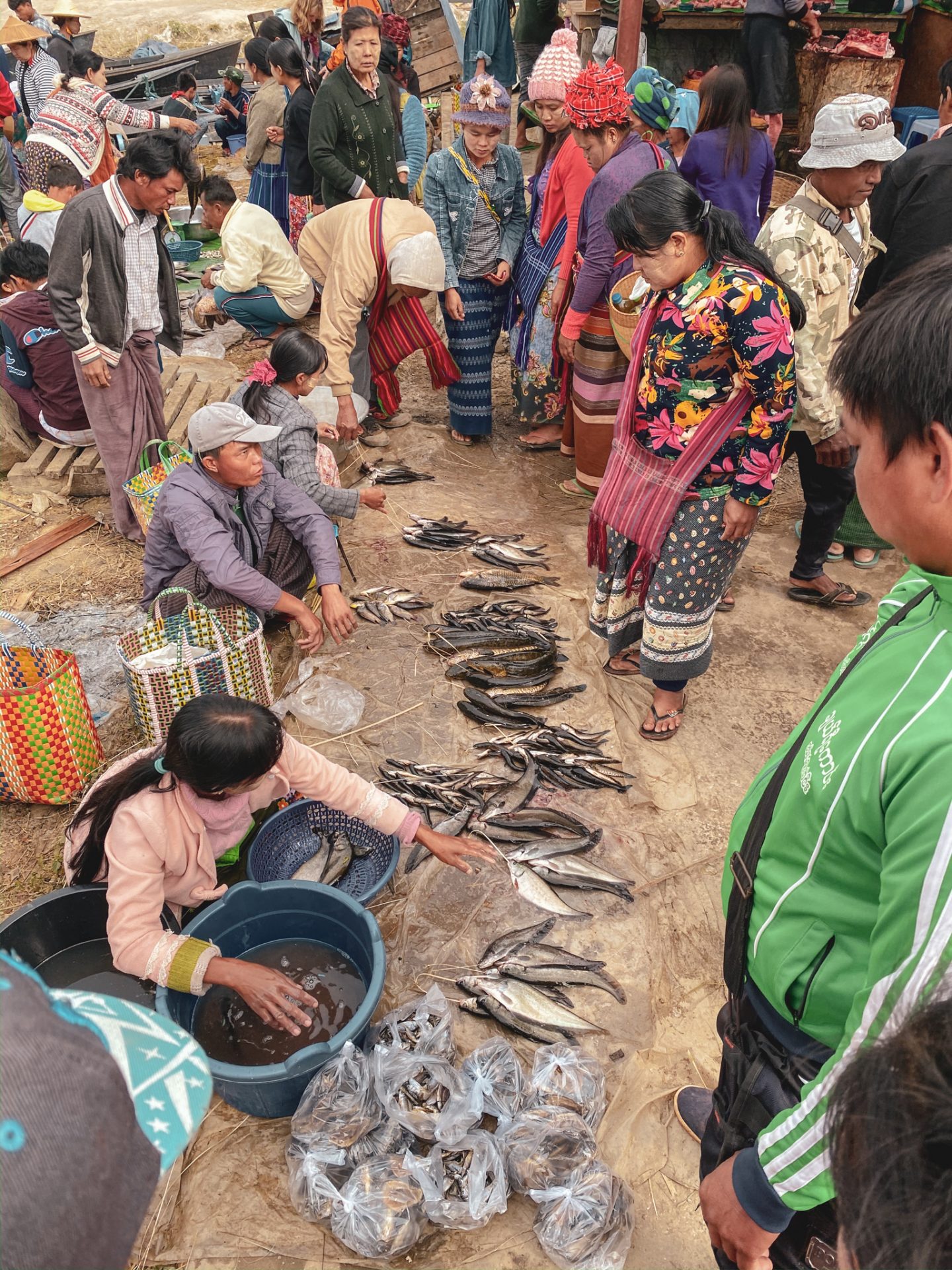
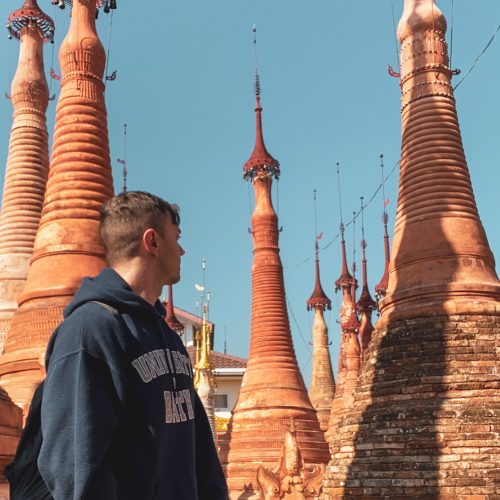
Cons:
Isolation: One of the downsides of lodging in a stilt house in a remote part of the lake is extreme isolation. If you opt for a similar option, consider that you will need to call a jetty to go anywhere, therefore stock up on food or water.
Noise: Jetties start to operate very early in the morning, around 6 am. If you are staying in a stilt house in the southern part of the lake, bring your earplugs, as the noise of the jetty will be as loud as a helicopter flying over your head. I am not exaggerating!
Don’t miss:
Shwe Inn Thein Paya: After a 10 minute-walk across an indoor market where locals sell souvenirs, Buddha statues, and necklaces, you will reach the Shwee Inn Thein Paya. This is a complex of more than a thousand stupas built in the 17th-18th century. Some stupas have been reconstructed and are now shining in gold splendour.
4. Yangon
If Thailand has Bangkok, Myanmar has Yangon. Yangon is the typical big city in South East Asia: fast-paced, hectic and diverse. What’s surprising about Yangon is the coexistence of different religions. Hindu, Christians, Muslims, and Buddhists live together in a city that hosts different architectural styles as a legacy of British colonialism.It might be harder to find the ultimate Burmese experience here, but Yangon’s strong personality is a golden ticket for good times.
Pros:
Diversity: the city is very international. Plenty of locals speak English as they are more exposed to tourism. This city is a mix of cultures and influences and reminded me of a mix between Bangkok and Hanoi.
The “downtown grid”: one of the things I liked the most was that downtown was organized in a grid and the name of streets are numbers, just like in the US. Some streets might look alike, but it’s very hard to get lost in Yangon.
Fun: unlike Bagan, there’s plenty of opportunities to party it up here, especially around 19th Street which becomes wild at night, with restaurants, pubs and bars buzzing.
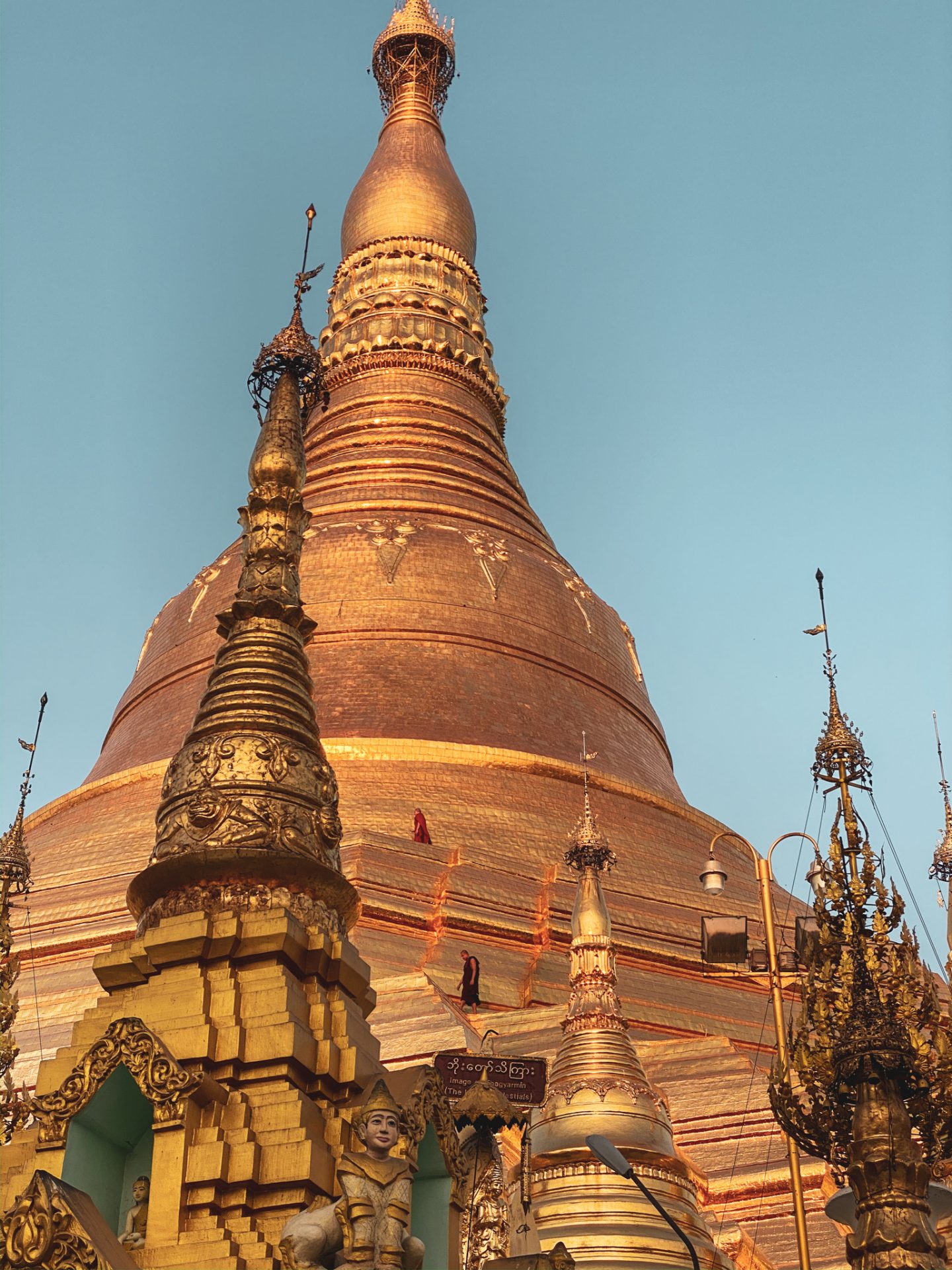
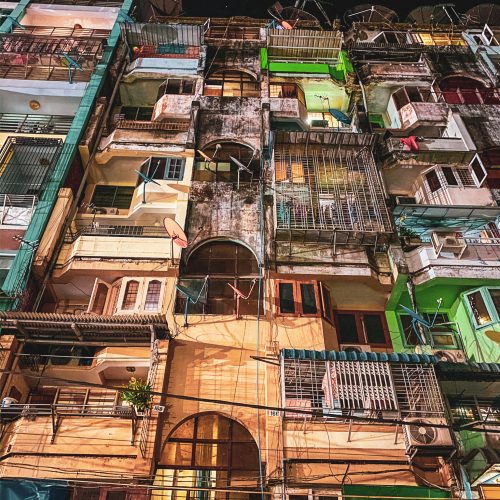
Cons:
Traffic: Yangon traffic is big city traffic. If you are on the road during rush hour, allow for plenty of extra time. Traffic can be exhausting. Normally, it takes 25 minutes to reach the airport from Downtown. If you are on the road during rush hour, triple that time.
Don’t miss:
Shwedagon Pagoda: It’s Yangon’s main attraction. Go there right before sunset to see the pagoda at its best light.
The Golden Pagoda is one of the most famous Buddhist pilgrimage sites. The main stupa is said to contain sacred relics of the Gautama Buddha as well as the three previous Buddhas.
5. Mount Popa
Mount Popa is the half-day trip from Bagan you don’t want to miss. Be ready to climb 777 steps and get to the top of a volcanic plug to enjoy an extraordinary sunset surrounded by playful monkeys. Check more about Mount Popa on my Instagram post here.
Pros:
Views: Mount Popa is 750-metre-high, therefore there’s no chance to escape a breath-taking view. Make sure you get to the top before sunset to enjoy the different sunset light.
Location: Mount Popa is only an hour drive away from Bagan, making it very easy to go there for an afternoon trip. I booked my tour for cheap from the kiosk next to the Bagan View Hotel.
Cons:
Monkey doody: get your wipes ready because it’s going to be dirty. Buddhist temples don’t allow tourists to enter with socks or shoes. You’ll have to walk up the steps barefoot. Unfortunately, although many locals try to keep the steps clean, monkeys are unstoppable and you’re basically entering their natural habitat. I will let you figure out what I mean.
Don’t miss:
Popa Taung Kalat Temple. Mount Popa is not just an extinct volcano to climb. A temple was built on it. During your short but hard walk up to the top (no longer than 20-25 minutes) you will go through a series of monasteries and shrines where people stop to worship the 37 nats.
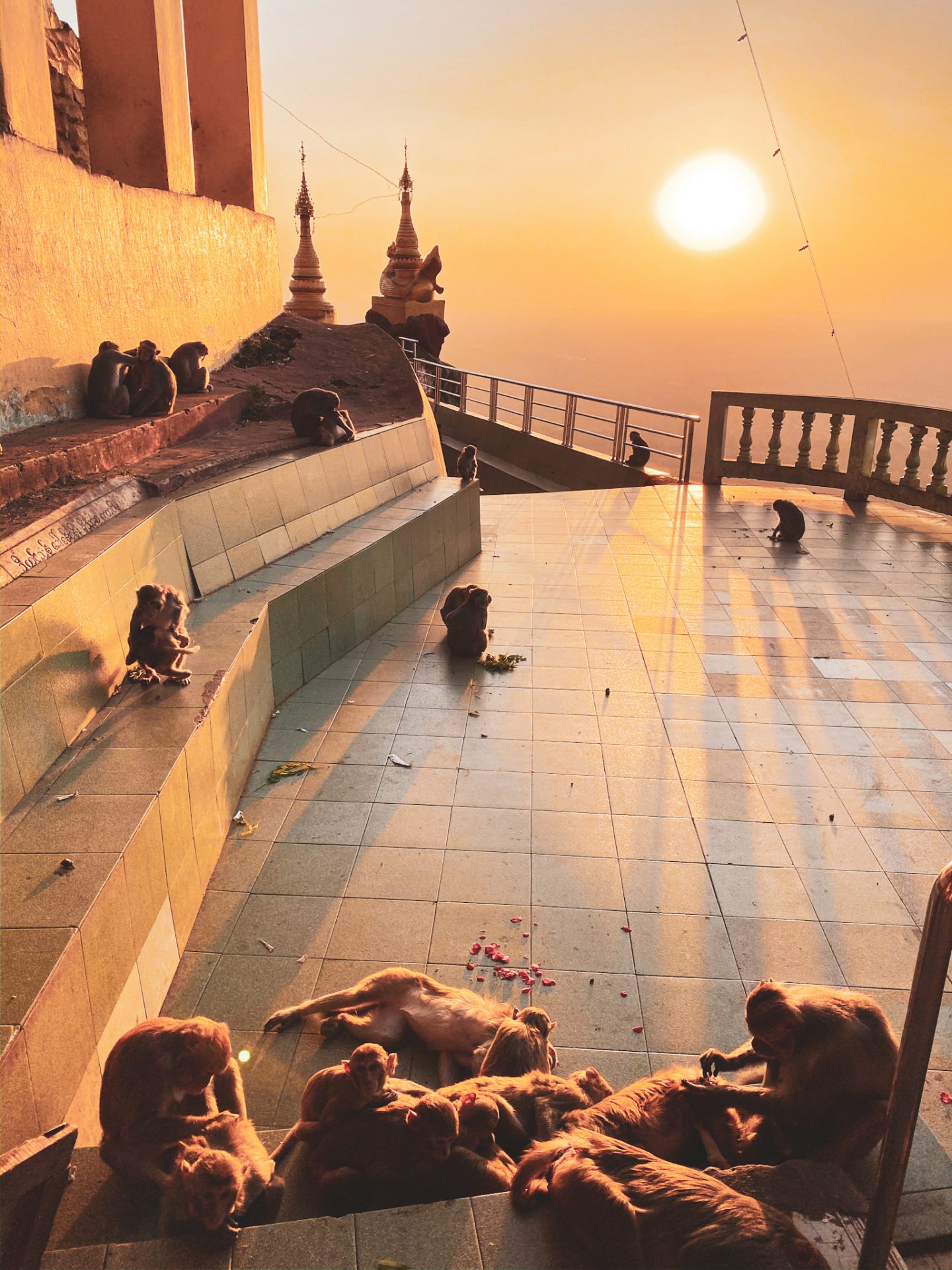

Don’t miss:
Popa Taung Kalat Temple. Mount Popa is not just an extinct volcano to climb. A temple was built on it. During your short but hard walk up to the top (no longer than 20-25 minutes) you will go through a series of monasteries and shrines where people stop to worship the 37 Nat spirits.
Andrea:
Andrea Minonne runs the Instagram account @andrexplores where he shows the real side of traveling and unveils unusual destinations through his informative and fun instagram stories. His mission is to let people see what a country really is, its culture, its people. He stays away from fake realities and wants his followers to experience what he goes through on his trips together with him, showing the good experiences but also the struggles. By the age of 30 he’s visited 50 countries across Europe, North America, Asia, Africa, and Australia and the best is yet to come, with his next destination being the Kingdom of Saudi Arabia. Find more about him at instagram or at www.andrexplores.com
